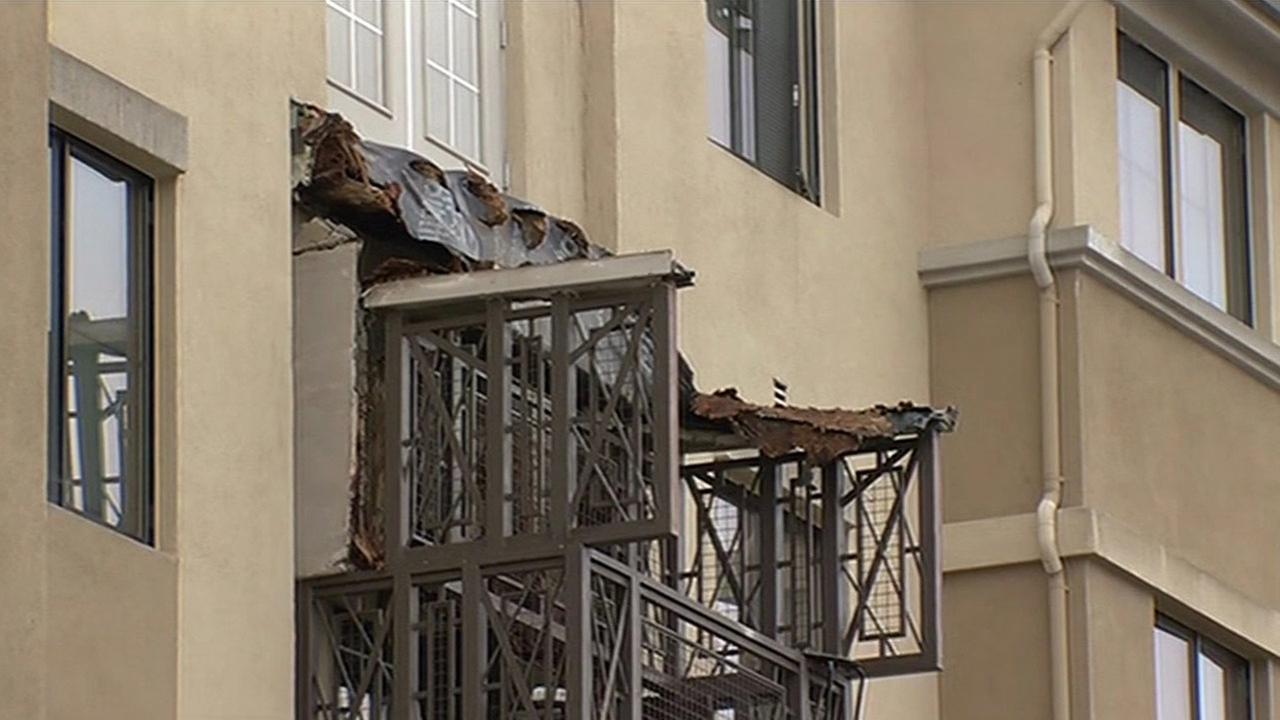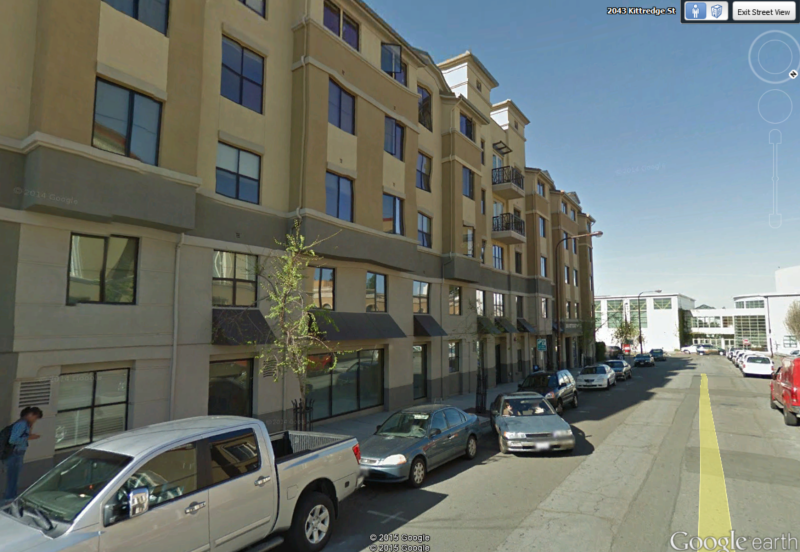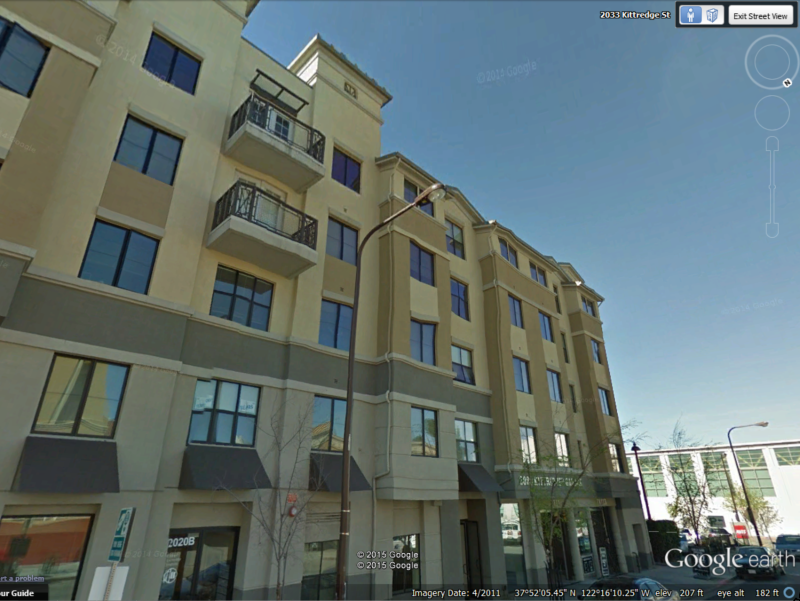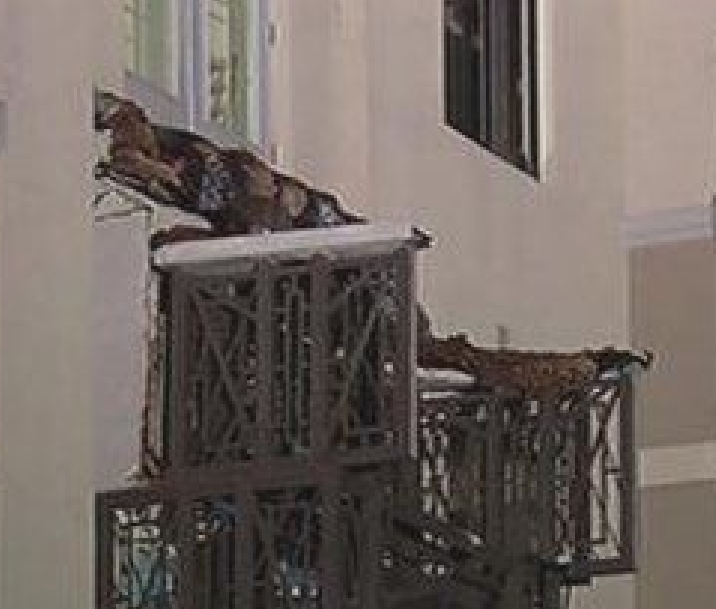Navigation
Install the app
How to install the app on iOS
Follow along with the video below to see how to install our site as a web app on your home screen.
Note: This feature may not be available in some browsers.
More options
Style variation
-
Congratulations TugboatEng on being selected by the Eng-Tips community for having the most helpful posts in the forums last week. Way to Go!
You are using an out of date browser. It may not display this or other websites correctly.
You should upgrade or use an alternative browser.
You should upgrade or use an alternative browser.
Balcony Collapse in San Francisco
- Thread starter bridgebuster
- Start date
- Status
- Not open for further replies.
Indeed tragic, but 13 people on that dinky balcony was probably a bad idea.
TTFN
faq731-376

Need help writing a question or understanding a reply? forum1529
Of course I can. I can do anything. I can do absolutely anything. I'm an expert!
There is a homework forum hosted by engineering.com:
TTFN
faq731-376
Need help writing a question or understanding a reply? forum1529
Of course I can. I can do anything. I can do absolutely anything. I'm an expert!
There is a homework forum hosted by engineering.com:
dcarr82775
Structural
A pic on the BBC shows what looks like wood joists cantilevering out broken right at the face of the wall. Looks like it rotated about the wall and landed upside down on the balcony below.
dcarr82775
Structural
I am gonna guess water getting to the wood had something to do with it.
It looks like the balcony ended up upside down on the lower balcony with the side that was facing the door now facing out. And part of the floor still attached to the original floor, this makes the balcony look like it has no floor anymore.
So the balcony rails let go of the building and the floor started to deflect as a cantilevered beam is prone to do. This would throw the students away from the building making the loading even worse. The balcony bent so far that it managed to flip coming to rest on the balcony below it and dumped the students over the edge some to the lower balcony and others four stories to the street below.
So the balcony rails let go of the building and the floor started to deflect as a cantilevered beam is prone to do. This would throw the students away from the building making the loading even worse. The balcony bent so far that it managed to flip coming to rest on the balcony below it and dumped the students over the edge some to the lower balcony and others four stories to the street below.
this is a much better image. Note that there is no wall damage to the sides of the double doors, so the balcony was solely supported by the cantilevered beans. The wood looks wet or rotted.

TTFN
faq731-376

Need help writing a question or understanding a reply? forum1529
Of course I can. I can do anything. I can do absolutely anything. I'm an expert!
There is a homework forum hosted by engineering.com:

TTFN
faq731-376
Need help writing a question or understanding a reply? forum1529
Of course I can. I can do anything. I can do absolutely anything. I'm an expert!
There is a homework forum hosted by engineering.com:
msquared48
Structural
Sure does look rotted. Also looks like TJI's which are not usually treated. I don't think you can treat them. Need an envelope engineer on this one.
Mike McCann, PE, SE (WA)
Mike McCann, PE, SE (WA)
msquared48
Structural
The report said that no one was allowed on the balconies. This statement has all sorts of implications.... Tragic end to a party and young lives.
Mike McCann, PE, SE (WA)
Mike McCann, PE, SE (WA)
from a local SE reviewing photos on behest of media..."While stressing that his assessment was preliminary, St. Onge said, “This appears to be a classic case of there being inadequate waterproofing at the point where the deck meets the house. If the waterproofing is substandard, rainwater can enter the building, causing dry rot, which can destroy the wood members within a short time, i.e. only a few years from construction.” "
LittleInch
Petroleum
The structures forum has picked this up and this site has some much better quality photos, if you go down a bit and then scan the photos.
Seems it was a wholly timber frame with some cladding to make it look like concrete.
I've never liked balconies....
Remember - More details = better answers
Also: If you get a response it's polite to respond to it.
Seems it was a wholly timber frame with some cladding to make it look like concrete.
I've never liked balconies....
Remember - More details = better answers
Also: If you get a response it's polite to respond to it.
Apparently Berkeley, CA, has initiated some code changes due to the balcony collapse a few weeks ago.
Here's a few quotes from the article:
[red]"The changes make new balconies and other sealed areas exposed to weather subject to stricter requirements on materials, inspection and ventilation.
In addition, the regulations require regular maintenance inspections for all such spaces for future buildings as well as those units already built.
The new inspection policy requires all existing buildings be inspected within six months.
The new rules state that projections exposed to weather—balconies, landings, decks, stairs and floors—shall be constructed of naturally durable wood, preservative-treated wood, corrosion-resistant steel or similar approved materials.
Other changes to local building codes involve laminated timbers and supporting members of permanent fixtures.
Glued laminated timbers that form structural supports on a building and are exposed to weather now will have to be pressure-treated with a preservative or be manufactured from naturally durable or preservative-treated wood.
And wood members that form the structural supports of buildings, balconies, porches or similar permanent building appurtenances that are exposed to the weather must be made with naturally durable or preservative-treated wood.
The new regulations also stipulate that weather-exposed enclosed assemblies "shall have cross ventilation for each separate enclosed space by ventilation openings protected against the entrance of rain and snow."
Matthai K. Chakko, spokesperson for city of Berkeley, says the new ordinances set up an inspection system where balconies will be inspected every three years by certified and qualified individuals,
such as a general contractor, structural pest control specialist, architect or engineer.
"And that's a pretty thorough inspection, because that inspector has to sign an affidavit attesting to the fact that these external and elevated wood and
metal decks, balconies, landings, stairway systems and other elements are free from deterioration, decay, improper alteration, hazardous dry rot and fungus," he says,
adding that the rules will affect about 6,000 different buildings around the city.[/red]
Here's the link:
Check out Eng-Tips Forum's Policies here:
faq731-376
Here's a few quotes from the article:
[red]"The changes make new balconies and other sealed areas exposed to weather subject to stricter requirements on materials, inspection and ventilation.
In addition, the regulations require regular maintenance inspections for all such spaces for future buildings as well as those units already built.
The new inspection policy requires all existing buildings be inspected within six months.
The new rules state that projections exposed to weather—balconies, landings, decks, stairs and floors—shall be constructed of naturally durable wood, preservative-treated wood, corrosion-resistant steel or similar approved materials.
Other changes to local building codes involve laminated timbers and supporting members of permanent fixtures.
Glued laminated timbers that form structural supports on a building and are exposed to weather now will have to be pressure-treated with a preservative or be manufactured from naturally durable or preservative-treated wood.
And wood members that form the structural supports of buildings, balconies, porches or similar permanent building appurtenances that are exposed to the weather must be made with naturally durable or preservative-treated wood.
The new regulations also stipulate that weather-exposed enclosed assemblies "shall have cross ventilation for each separate enclosed space by ventilation openings protected against the entrance of rain and snow."
Matthai K. Chakko, spokesperson for city of Berkeley, says the new ordinances set up an inspection system where balconies will be inspected every three years by certified and qualified individuals,
such as a general contractor, structural pest control specialist, architect or engineer.
"And that's a pretty thorough inspection, because that inspector has to sign an affidavit attesting to the fact that these external and elevated wood and
metal decks, balconies, landings, stairway systems and other elements are free from deterioration, decay, improper alteration, hazardous dry rot and fungus," he says,
adding that the rules will affect about 6,000 different buildings around the city.[/red]
Here's the link:
Check out Eng-Tips Forum's Policies here:
faq731-376
- Thread starter
- #20
- Status
- Not open for further replies.
Similar threads
- Replies
- 13
- Views
- 13K
- Replies
- 35
- Views
- 13K
- Replies
- 8
- Views
- 6K
- Replies
- 1
- Views
- 658
- Replies
- 48
- Views
- 11K



